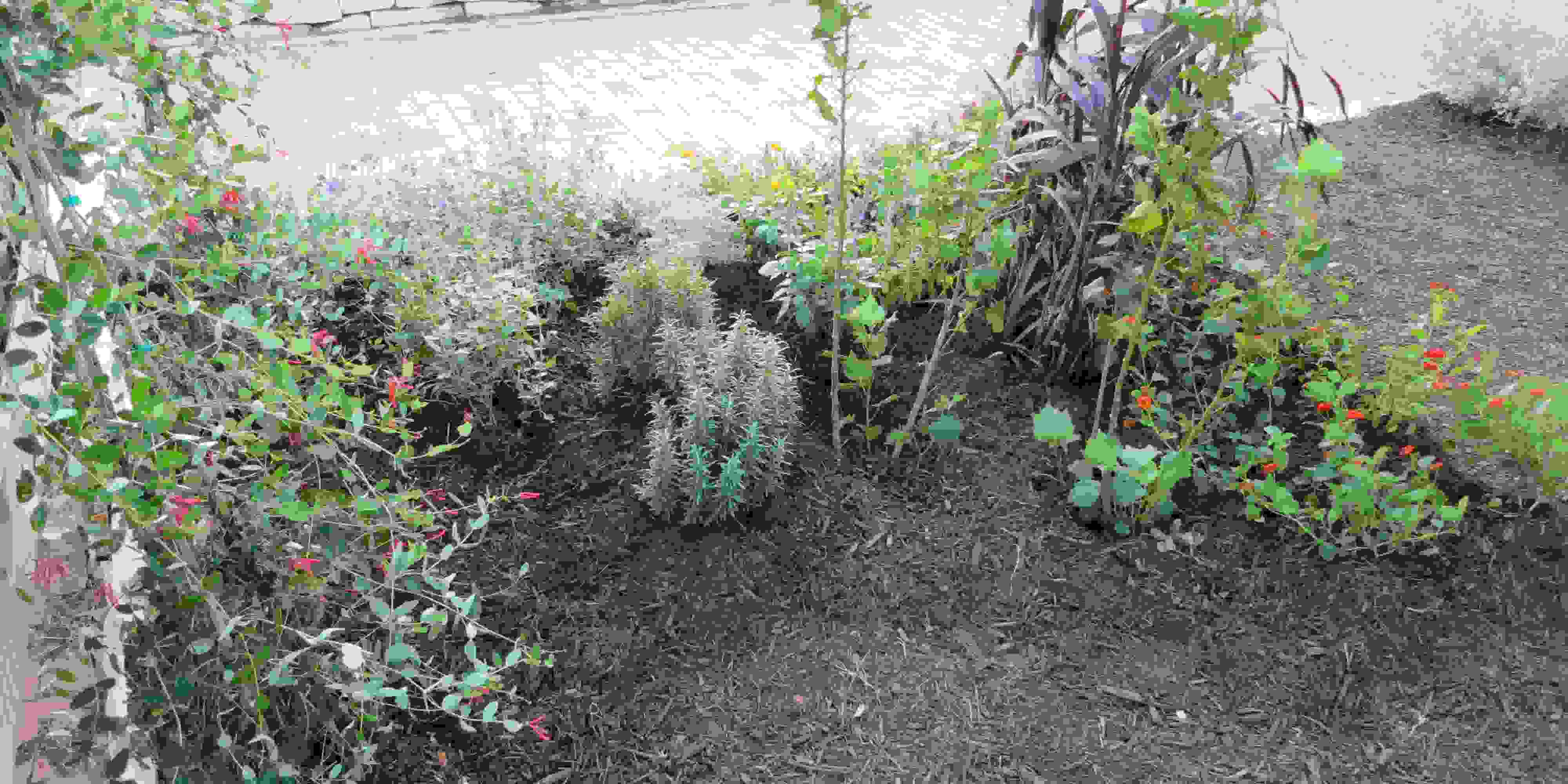With winter just around the corner, many Texas homeowners are looking for ways to maximize their landscape and garden enjoyment while conserving natural resources.
One way is using Earth-Kind® Landscaping, a horticultural system developed by Texas A&M AgriLife Extension Service that combines organic and conventional landscaping practices with a focus on environmental responsibility. Earth-Kind’s goal is to encourage water conservation, reduce fertilizer and pesticide use, conserve energy and recycle landscape waste.
“Fall, especially going into the winter time, is a good time to reevaluate your landscape in terms of design and where you might want to make improvements,” said Tim Hartmann, Extension program specialist for Earth-Kind. Taking a systematic approach to landscaping is critical in conserving and protecting natural resources while maintaining quality landscape functionality.
Hartmann said an important step in strategic planning of a landscape or garden is proper plant selection. Natives and other adapted plants are a good choice for homeowners as they’re tough, well suited for their climatic regions and have a high tolerance towards indigenous diseases and pests, he said.
Once the appropriate plants are selected, homeowners should position them in the landscape to meet light and water requirements. Hartmann recommends hydrozoning, which divides plants into three different irrigation groups: heavier water users that do not have a deep root system, such as turf; medium water users that require occasional watering; and low water users, typically shrubs and trees, which are well adapted to the environment.
By grouping plants based on irrigation needs, homeowners can ensure each plant receives only the needed amount of water and no resources are wasted, he said. Plants that are strategically placed will also require less maintenance and can reduce energy costs for water and pesticide usage.
Installing a drip irrigation system will apply water only to where it is needed and minimize runoff and evaporation loss. Hartmann said drip irrigation is a much more efficient system than traditional sprinkler irrigation and prevents water splashing onto plants’ leaves.
Keeping water off foliage not only conserves water but is beneficial to plant health, as it can help reduce damage to foliage from using water high in salts. Many fungal diseases such as blackspot on roses develop as a result of water collecting and sitting on plant leaves for hours, he said.
While installing a slow and controlled watering method may initially be more costly than sprinklers, the water savings over time as well as disease prevention make it a worthy investment, he said.
Early spring is a good time for homeowners to run their irrigation systems using the ‘manual’ function to look for damage from winter freezes.
Besides drip irrigation, homeowners can use rainwater harvesting to reduce water bills and irrigate sensitive plants. Collection and storage of rainwater is particularly useful in areas where tap water contains high levels of sodium and chlorine. Drawing aquifers down can result in more impurities in the water, he said.
“As our water resources become more depleted, water quality is also going to be a major issue,” Hartmann said. “Rainwater harvesting can be done in any situation, whether you’re using a little trash can or a 2,000-gallon tank.”
Regardless of which rainwater capture system homeowners choose, the dormant seasons are a good time to begin planning and implementing new irrigation systems for the spring.
For already established landscapes, other practices can be easily implemented to help transition a traditional garden to an Earth-Kind one. Maintaining a 3-inch layer of mulch year round is an effective means to improve soil and plant health by supplying nutrients, improving drainage and strengthening the root system.
“Fall is a good time to reapply mulch,” Hartmann said. “Mulch is really important as it obviously discourages weed growth and helps to conserve water but also feeds the soil as it breaks down. It will help to modify the soil temperature, so in the winter it will actually protect the roots and keep them warmer, whereas in the summer it keeps them cooler.”
Hartmann said many forms of mulch can be used such as native hardwood or even shredded leaves. Debris from cutting back warm-season perennials, grass clippings and leaves can be made into compost, rather than sending them to the landfill, and should be ready to incorporate into the soil in the spring. Compost builds soil structure and acts as a slow-release fertilizer that can be returned to the soil or serve as an additional layer of insulation and source of nutrients.
Homeowners should avoid using fertilizers high in nitrogen in late fall. “If you fertilize a lot with nitrogen, your plants are going to respond with a lot of growth,” he said. Early growth can lead to damage once the first frost comes. Late winter is the optimal time to begin fertilizing most trees to ensure nutrients are delivered before they begin growing. Pruning should also wait until late winter to prevent early growth and cold damage.
Hartmann said it is never too early to begin implementing environmentally sustainable practices for landscapes and gardens. As the population of Texas grows, water conservation becomes increasingly critical. In some cities, landscaping accounts for 30 percent of municipal water use, he said. In even drier places, it can account for 60 percent. Landowners who adopt Earth-Kind practices are significantly reducing their water consumption, managing their resources effectively and helping to ensure future water availability and quality.
“The cheapest and most effective way to make sure we have water available for the future is to be more efficient with what we already have.”
Earth-Kind has numerous publications on water conservation, landscaping for energy conservation, reduction of fertilizer and pesticide use and other topics. Visit its website to read these publications as well as other resources.

